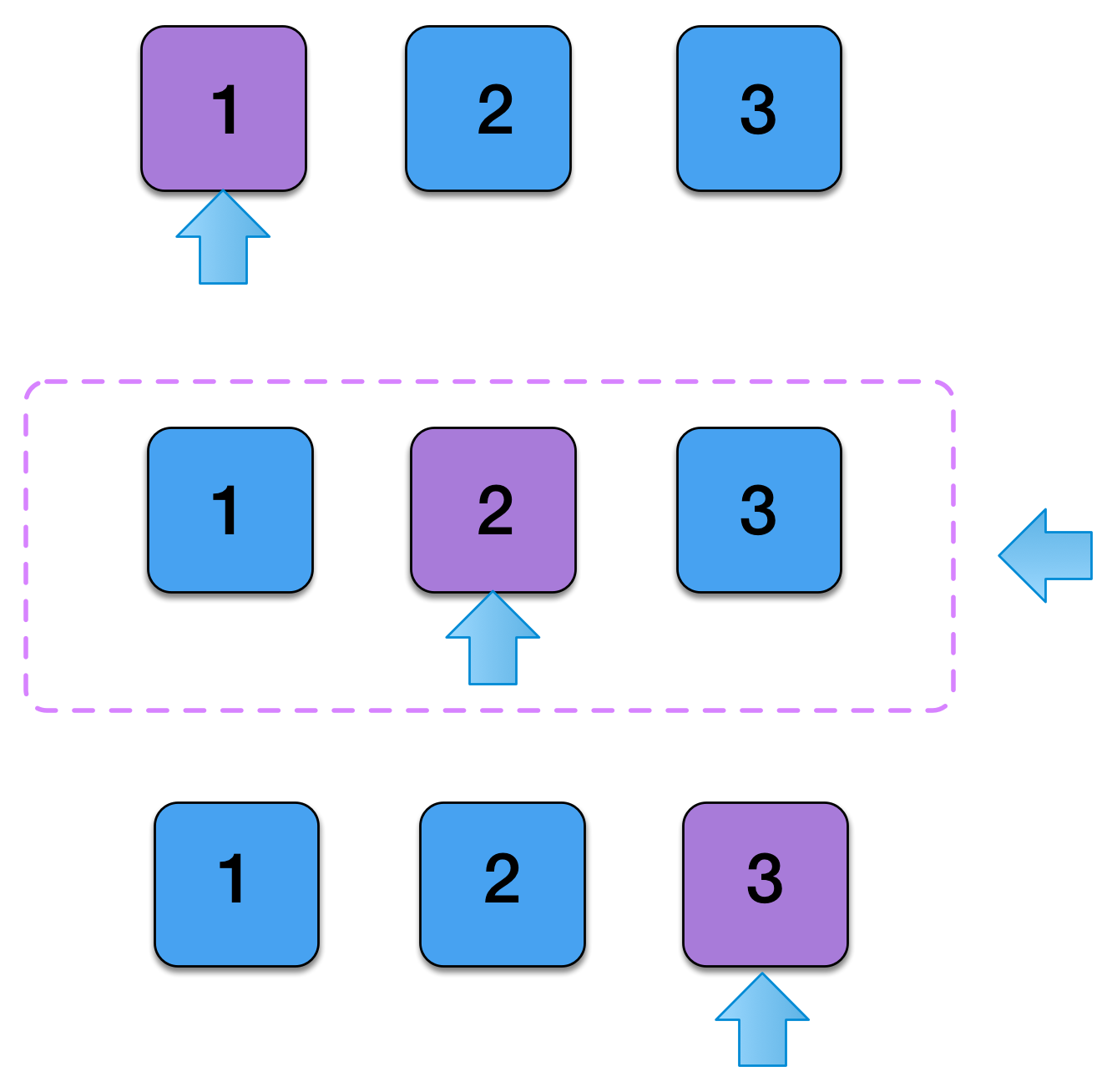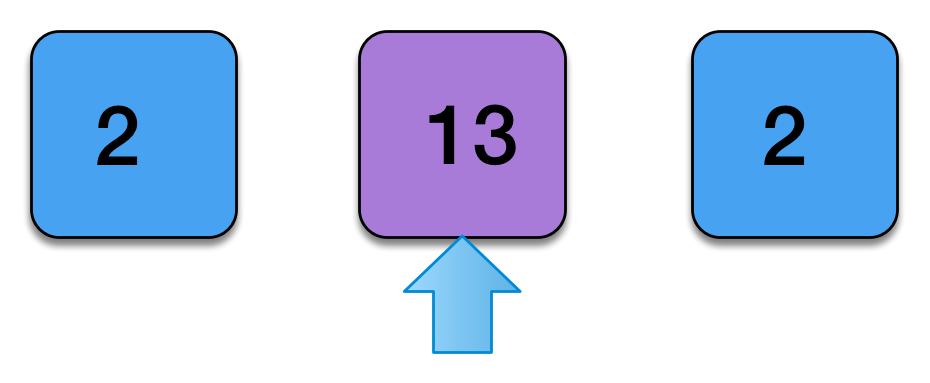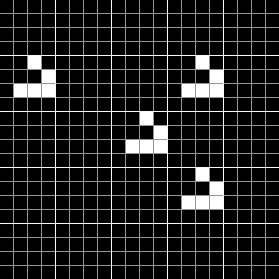Life Is A Comonad
Eli Jordan
@eliaskjordan
http://eli-jordan.github.io
About Me
I am... Lead Developer at Tapad
I am... a Scala Developer
I am not... a Theorist
I am not... an expert in Category Theory
I am... a Functional Programmer
(Co?)Motivation

Game Plan
What is a Comonad?
Zipper as a Metaphor for Comonads
Conway's Game of Life
What is a Comonad?
A comonad is the Dual of a monad
trait Monad[F[_]] {
def unit[A](a: A): F[A]
def join[A](ffa: F[F[A]]): F[A]
}
trait Comonad[F[_]] {
def counit[A](fa: F[A]): A
def cojoin[A](fa: F[A]): F[F[A]]
}Relation To Monad
unit : A => F[A]
counit: F[A] => A
join : F[F[A]] => F[A]
cojoin: F[A] => F[F[A]]Rewriting the signatures, the reversal is more apparent


unit: Apple => Box[Apple]
Takes an apple and puts it in a box


counit: Box[Apple] => Apple
Takes an apple in a box, and extracts the apple.
join: Box[Box[Apple]] => Box[Apple]
Takes an apple in a box, in a box, and throws out one of the boxes.


cojoin: Box[Apple] => Box[Box[Apple]]
Takes an apple in a box, and puts it in another box.


unit / counit
In a Monad the unit function takes a pure value, and wraps it in an F structure F[A]
In a Comonad the counit function takes an F structure and extracts a pure value A
join / cojoin
In a Monad the join function takes two layers of F structure F[F[A]] and collapses it into one layer F[A]
In a Comonad the cojoin function takes one layer of F structure F[A] and duplicates it F[F[A]]
Thats the definition...
But, how do
comonads behave?
... enter the Zipper
Zipper as a Metaphor for Comonads
Zipper

Moving Left


Moving Right


The Code
case class StreamZipper[A](
left: Stream[A], focus: A, right: Stream[A]) {
def moveLeft: StreamZipper[A] =
new StreamZipper[A](
left.tail, left.head, focus #:: right)
def moveRight: StreamZipper[A] =
new StreamZipper[A](
focus #:: left, right.head, right.tail)
}Whats that got to do with comonads?
-
counit extracts an A from an F[A]
- If F == StreamZipper, this is trivial
we just access the focus element.
implicit object ZipperComonad extends
Comonad[StreamZipper] {
def counit[A](fa: StreamZipper[A]): A =
fa.focus
// ...
}So, we have half a comonad...
What about the other half a.k.a cojoin?
- We need to generate a StreamZipper[StreamZipper[A]]
- The key insight required to define cojoin, is that we want to
- Duplicate the original zipper, but with the focus shifted.
- There should be a duplicate with the focus set on every element in the original zipper.

case class StreamZipper[A](
left: Stream[A], focus: A, right: Stream[A]) {
// ...
// A stream of zippers, with the focus set to each
// element on the left
private lazy val lefts: Stream[StreamZipper[A]] =
Stream.iterate(this)(_.moveLeft)
.tail.zip(left).map(_._1)
// A stream of zippers, with the focus set to each
// element on the right
private lazy val rights: Stream[StreamZipper[A]] =
Stream.iterate(this)(_.moveRight)
.tail.zip(right).map(_._1)
lazy val cojoin: StreamZipper[StreamZipper[A]] =
new StreamZipper[StreamZipper[A]](lefts, this, rights)
}
implicit object ZipperComonad extends
Comonad[StreamZipper] {
def counit[A](fa: StreamZipper[A]): A =
fa.focus
def cojoin[A](fa: StreamZipper[A]):
StreamZipper[StreamZipper[A]] = fa.cojoin
}Now, the comonad instance is trivial
Recap
- A Comonad is the dual of a Monad
- It has two operations counit and cojoin
- A zipper is an example of a Comonad
- But, Monads also have the flatMap operation
- How do we define coflatMap?
We Derive It
But, lets first look at our definitions again
trait Monad[F[_]] {
def unit[A](a: A): F[A]
def join[A](ffa: F[F[A]]): F[A]
def flatMap[A, B](fa: F[A])(f: A => F[B])
(implicit F: Functor[F]): F[B] = ???
}trait Comonad[F[_]] {
def counit[A](fa: F[A]): A
def cojoin[A](fa: F[A]): F[F[A]]
def coflatMap[A, B](fa: F[A])(f: F[A] => B)
(implicit F: Functor[F]): F[B] = ???
}trait Monad[F[_]] {
def unit[A](a: A): F[A]
def join[A](ffa: F[F[A]]): F[A]
def flatMap[A, B](fa: F[A])(f: A => F[B])(...): F[B] =
join(fa.map(f))
}trait Comonad[F[_]] {
def counit[A](fa: F[A]): A
def cojoin[A](fa: F[A]): F[F[A]]
def coflatMap[A, B](fa: F[A])(f: F[A] => B)(...): F[B] =
cojoin(fa).map(f)
}A Mental Model of coflatMap
- The function passed to coflatMap can be thought of as a local computation.
- We first cojoin, to get a view of the structure from all perspectives.
- We then use map to apply a local computation from every perspective.


cojoin( ) =
cojoin(fa).map(f)

cojoin(fa).map(f)
f: StreamZipper[Int] => Int
map( )


=
coflatMap extends a local computation into a global context
Sliding Average
def avg(a: StreamZipper[Int]): Double = {
val left = a.moveLeft.focus
val current = a.focus
val right = a.moveRight.focus
(left + current + right) / 3d
}
// Note: The StreamZipper constructor reverses
// the first list.
StreamZipper(List(1, 2, 3), 4, List(5, 6, 7))
.coflatMap(avg).toList
// List(1.33.., 2.0, 3.0, 4.0, 5.0, 6.0, 6.66..)
Conway's
Game of Life
What is it?

- A two-dimensional grid of evolving cells that are alive or dead.
- At each evolution, the next state of a cell is determined by the state of its neighbours.
The Rules
-
Current = alive and < 2 neighbours alive => dead (underpopulation)
-
Current = alive and 2 or 3 neighbours alive => alive
-
Current = alive and > 3 neighbours alive => dead (over population)
- Current = dead and 3 neighbours alive => alive (reproduction)
Modelling The Solution
- The next state of a cell is determined by its local neighbourhood
- The rules need to be extended from a local definition to apply globally.
- Does that remind you of coflatMap? (it should!)
- We will use this alignment, and an extension of the StreamZipper to implement the Game Of Life
case class Grid[A](
value: StreamZipper[StreamZipper[A]]) {
def moveUp: Grid[A] =
Grid(value.moveLeft)
def moveDown: Grid[A] =
Grid(value.moveRight)
def moveLeft: Grid[A] =
Grid(value.map(_.moveLeft))
def moveRight: Grid[A] =
Grid(value.map(_.moveRight))
def counit: A =
value.counit.counit
def cojoin: Grid[Grid[A]] = ??? // TODO
}Extending The Zipper into 2 Dimensions
case class Grid[A](
value: StreamZipper[StreamZipper[A]]) {
def cojoin: Grid[Grid[A]] =
Grid(layer(layer(value))).map(Grid.apply)
// Notice that the implementation is very similar to
// what we had in our original zipper except that we
// need to make use of the 'map' function in the iteration.
private def layer[X](u: StreamZipper[StreamZipper[X]]):
StreamZipper[StreamZipper[StreamZipper[X]]] = {
val lefts = Stream.iterate(u)(ssx => ssx.map(_.moveLeft))
.tail.zip(u.left).map(_._1)
val rights = Stream.iterate(u)(ssx => ssx.map(_.moveRight))
.tail.zip(u.right).map(_._1)
StreamZipper(lefts, u, rights)
}
}Using the same derivation of coflatMap we get
case class Grid[A](...) {
// ...
def coflatMap[B](f: Grid[A] => B): Grid[B]
}The function f is what we need to implement.
It will define the rules of the game.
def conway(grid: Grid[Boolean]): Boolean = ???def conway(grid: Grid[Boolean]): Boolean = {
val liveCount = neighbours(grid).count(identity)
grid.counit match {
// under population
case true if liveCount < 2 => false
// thriving
case true if liveCount == 2 || liveCount == 3 => true
// over population
case true if liveCount > 3 => false
// reproduction
case false if liveCount == 3 => true
}
}Now, translating the rules is very simple...
def neighbours[A](grid: Grid[A]): List[A] =
List(
grid.moveUp,
grid.moveDown,
grid.moveLeft,
grid.moveRight,
grid.moveUp.moveLeft,
grid.moveUp.moveRight,
grid.moveDown.moveLeft,
grid.moveDown.moveRight
).map(_.counit)For completeness
Run Our Game!
Review
- We explored the definition of a Comonad
- Provided an intuition for Comonads, using the Zipper
- Demonstrated the use of a Comonad to solve a programming problem, but implementing
Conway's Game Of Life
References
- My blog on the same topic
https://eli-jordan.github.io/2018/02/16/life-is-a-comonad/
- Full source code
https://github.com/eli-jordan/game-of-life-comonad
-
These slides
https://slides.com/elijordan/life-is-a-comonad
We're Hiring

Questions?

Appendix
Comonad Laws
// Left identity
wa.cojoin.counit <-> wa
// Right identity
wa.coflatMap(_.counit) <-> wa
// Associativity
wa.cojoin.cojoin <-> wa.coflatMap(_.cojoin)